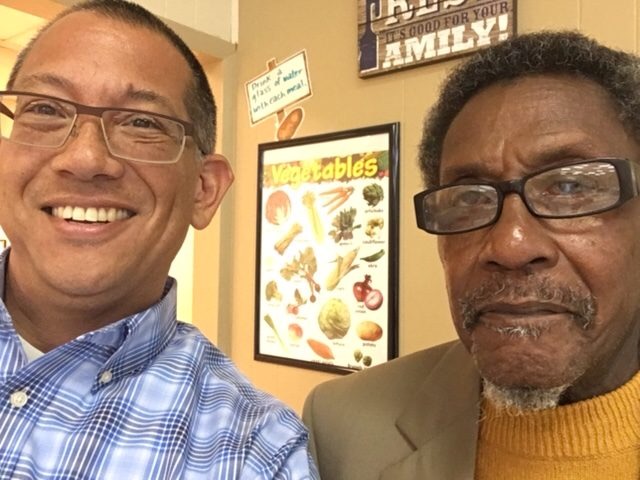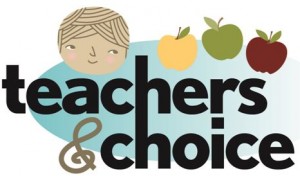Ken Brockington was one of the best teachers I ever had. Cerebral. Serious. Always dapper. In the mid-1980s, he inspired me and countless others in AP American History. Time has fuzzed the details, but I can’t forget Mr. B’s yellow suit, or his red pen. “Interesting,” he’d write in the margins of my papers, next to yet another half-baked idea, “but keep thinking.”

The teenage me had no clue, but Mr. B was a pioneer. In the late 1960s, he was on his way to law school when a brief gig as a GED teacher detoured him into the teaching profession – and on to a new frontier. In Jacksonville, Fla. he became one of the first black teachers in integrated public schools. To get a sense of the challenge, consider many of those schools were named after Confederate generals, and one was named after the founder of the KKK. That’s where Mr. B taught me.
Today, at 68, Brockington is again surfing history. After 30 years as a teacher and principal in one of Florida’s biggest school districts, he’s now the academic dean of a private school. Cornerstone Christian seeks to uplift disadvantaged kids, and it’s able to serve them thanks to the Florida tax credit scholarship, the nation’s largest private school choice program.
 Educators like Ken Brockington are part of another sea change in American education. At its heart, the school choice movement is fueled by the same drive for educational opportunity that spurred Brown v. Board of Education, and there’s no state where choice is becoming mainstream faster than Florida. Despite much-publicized skirmishes, like the lawsuit against tax credit scholarships and the NAACP attack on charter schools, choice is here to stay.
Educators like Ken Brockington are part of another sea change in American education. At its heart, the school choice movement is fueled by the same drive for educational opportunity that spurred Brown v. Board of Education, and there’s no state where choice is becoming mainstream faster than Florida. Despite much-publicized skirmishes, like the lawsuit against tax credit scholarships and the NAACP attack on charter schools, choice is here to stay.
Take it from a history teacher.
Parents aren’t going back, Brockington said: “They’re beginning to understand the power of choice.”
Teachers aren’t going back either. Mr. B (now Dr. B) said many of his colleagues are exceptionally skilled, but constrained in conventional schools. “Choice will allow them to get outside the box,” he said.
As fate would have it, I am again in Mr. B’s orbit.
I work for Step Up For Students, the nonprofit that helps administer the tax credit scholarship and hosts this blog. This year, the program is serving 95,000 students, including 7,000 in Jacksonville and 229 at Cornerstone. When work brought me to Jacksonville last month, I got to thank Mr. B in person for teaching me. As a bonus, I got to learn from him again.
The lawsuit that aims to kill the scholarship program is led by the state teachers union. Brockington was a union member; at one time, he said, he was the local vice president. But he had no qualms about switching from public school to private school more than a decade ago.
At the time, Cornerstone contracted with a social service agency to teach some of the city’s most “at-risk” students – students with, as Mr. B described it, “a suitcase of problems.” Teen moms. Dads in jail. A long list of learning disabilities. Today’s students, while not as disadvantaged as those in the past, still face so many of the hurdles that come with poverty.
Mr. B said this is where he can best help them. Their academic outcomes aren’t where they should be, yet, but they’re getting the right mix of toughness and compassion, he said: “They’ve been written off. But now there’s light at the end of the tunnel.”
Nearly 80 percent of Cornerstone students are black. Brockington helped integrate public schools, but grew up in all-black schools. He said the academic environments of the latter were shaped by people like his father, a welder and Army veteran. On the day his dad died of colon cancer, he told his son to get to school and not miss any classes.
Segregated schools were separate, unequal, and immoral. Many were also rich with love, pride and high expectations. “There was no such thing as, ‘I can’t’,” Brockington said of the schools he attended. “There was, ‘You will’.”
I’m glad Mr. B held me to those standards. I’m also glad he and his students have options.
When I was learning the Gettysburg Address in his class, almost every student in Jacksonville attended their zoned neighborhood school, or the public school they were bused to for desegregation. Maybe 10 percent went to private school.
Today, a single generation later, more than 40 percent of PreK-12 students in Florida – more than 1.5 million kids – attend something other than zoned neighborhood schools. And the wave isn’t done rolling. The future will bring even more choice, driven by more parent power to pick and choose, and more teacher power to create and offer.
The latter doesn’t get emphasized enough.
Thanks to school choice programs, Florida teachers have more power than ever to work in, and form, schools that hew to their visions of a good education. More and more will use it.
When they finally break free, they’ll see a tough-minded history teacher, again ahead of the curve.


